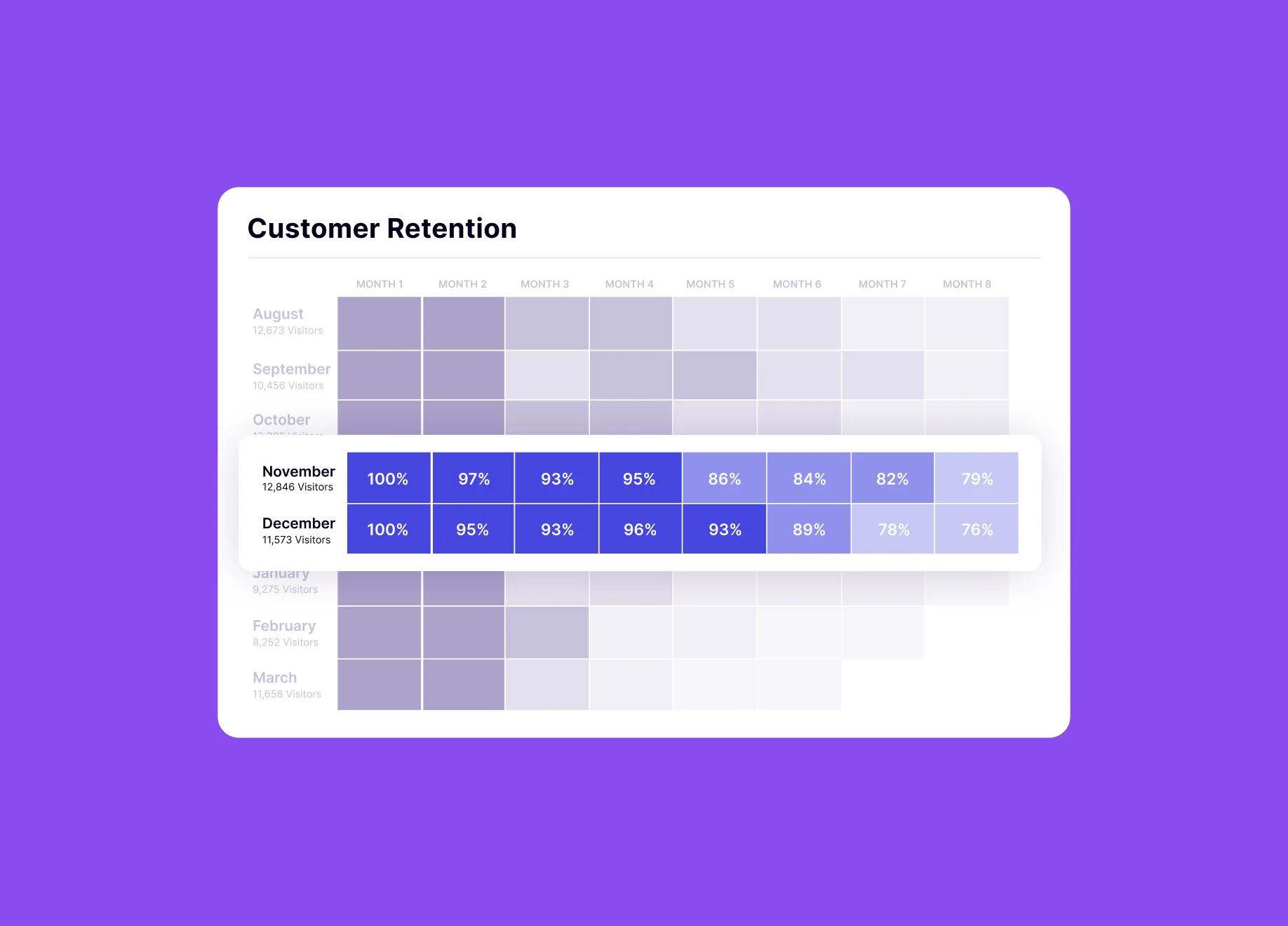
A COMPREHENSIVE GUIDE TO
Customer retention
A measure of how many customers renew their contract at the end of their subscription term.
Dive deeper
Table of Contents
What is customer retention?
For SaaS businesses, customer retention is a measure of how many customers renew their contract at the end of their subscription term. It is the inverse of customer churn, and is also known in the industry as “logo retention rate.” The key to maintaining a high customer retention rate (CRR) is to create a high concentration of engaged and successful customers.
How do I measure customer retention?
Retention is measured by comparing the number of customers at the start of a given time period with the number of customers at the end of that period. This measure should, however, exclude any new customers gained during this time.
For example, a company that begins the year with 100 customers, acquires ten new customers and loses ten of the initial customers by the end of the year, is considered to have 90% retention. Despite the fact that the number of customers remained the same—meaning growth is flat—only 90 customers are retained. Strong customer acquisition does not cover up low retention.
Every organization can measure retention over any time period, but it’s important for each business to find the right cadence. If a company has shorter sales cycles or a pay-as-you-go contract structure, monthly customer retention might be ideal. For longer sales cycles or multi-year contracts, an annual retention rate may make more sense. If it’s not obvious, it is best to begin by measuring retention on a quarterly basis.
Why does customer retention matter?
A high customer retention rate drives long-term customer relationships, and because the cost to acquire a customer can often be greater than the initial contract value, low retention can cause an organization to lose money when they sign a new customer. Monitoring customer retention can help a business maximize customer lifetime value (LTV) and ensure that the business can recoup its customer acquisition costs.
Stated another way, a company with strong user acquisition but low retention is like a hole in a bucket. In our example above, losing a customer for every gained customer means flatlining growth, increasing revenue churn, and ultimately running out of customers to sell to. Since it’s 5-25x more expensive to acquire a new customer than to keep an existing customer, it’s always more prudent to invest in improving retention for the current base than continuing to add customers who aren’t going to be retained. Measuring customer retention allows an organization to detect and diagnose if it has a hole in its bucket, so it can understand where to invest for maximum growth.
For example, the team at Oranj, an online platform for financial advisors, saw that the customers they retained had users who visited the platform often and completed onboarding. With this initial insight, they used product usage data to identify where users tended to drop off during the onboarding process and worked to increase onboarding completion and ultimately, drive customer retention.
Customer retention vs. user retention
Although they can seem similar, customer retention and user retention measure different things. User retention looks at the individual level, and asks, “how often does a specific person come back to my product?” while customer retention looks at the account level, and asks, “will this organization continue to pay for and use my product?” User retention can be independent from customer retention—for example, if an individual leaves the organization for a new job or switches to a new team—but high user churn can be a leading indicator of customer churn. Finally, losing key users on an account like an internal champion or executive sponsor can be more damaging than losing a low-usage end user, and should be managed accordingly.

